Review of GSM/UMTS Smartphone Nokia E73
Table of Contents:
- Positioning
- Design, Size, Controls
- Display
- Keypad
- Battery
- Memory
- Performance
- USB, Bluetooth
- Camera
- Software
- Impressions
Sales package:
- Handset
- Charger (AC-10U)
- 4 GB microSD memory card
- USB data cable CA-101D
- Wired stereo-headset (WH-205)
- 1500 mAh battery Li-Pol (BP-4L)
- Leather Pouch
- User Guide

What is Nokia E73? Nokia E73 is a Euro spec Nokia E72 with minor design changes, created for T-Mobile USA. Changes include a little different softkey and menu buttons, the phone model name moved from the right side of the screen to the left side, some of the design (i.e. the bottom of the phone housing T-Mobile logo) was taken from a very successful Nokia E71 (the phone E72 in turn is based upon). Because E73 is not that much different from E72 we will take the E72 review Eldar wrote in September of 2009 as a basis and just add or deduct some parts. To make it easier for you we will publish the parts from Eldar's review in italic while the new parts will be written in normal font. We will also replace the E72 with E73 wherever possible. Shall we?
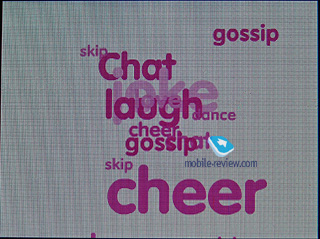
Positioning
In March of 2010 T-Mobile USA launched the first Nokia smartphone handset for the carrier Ц Nokia Nuron, a.k.a. Nokia 5230, a Symbian OS based so called S60 phone. It is relatively easy to launch a simple phone; it is a different story when you have to create a whole eco system for a new smartphone OS. In case of Nuron Nokia and T-Mobile went pretty far Ц the companies had to design T-Mobile applications for Symbian and then integrate them into a shopping software together with Nokia's OVI Store for apps, where customers could purchase or download for free the software and media for their T-Mobile USA Nokia made handset. Considering the amounts of time, work and money going into a project like this, it was easy for us to predict the appearance of more Symbian phones for sale through T-Mobile. Nokia E73 became the second S60 phone in T-Mobile line up and what a fine choice it is.
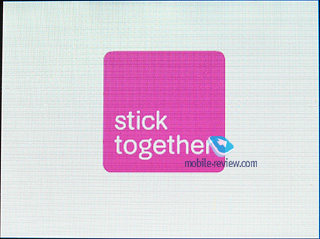
I should not probably tell you that Nokia and Mobile-Review are currently going through a rough patch, involving at this stage even the police. The fact that we find Nokia a weakened player, not able to create something strong enough to compete with the top of the line solutions from Apple, HTC, Samsung and even Motorola, does not mean that we are not able to give praise where it is deserved and our impressions from E73 are mostly very positive.
As a QWERTY handset E73 squires directly against BlackBerry phones, Curve in particular, and a single remaining WM 6.5 device with QWERTY in T-Mobile line up Ц T-Mobile Dash, giving a third viable alternative to a business user interested in this type of a phone. Nokia has some very strong suites, but considering the equal cost of the Curve, the Dash and the E73 the more well known BlackBerry should seriously outsell the E73. Again, not because it is better, because it is what a US business user is used to, it is what he/she sees on the table in front of his/her boss, in the hands of fellow business travelers and on the belts of his/her colleagues. Heck, even the President uses it! Nonetheless, if BlackBerry feels tiring and boring Ц welcome to E73, you will not be disappointed.
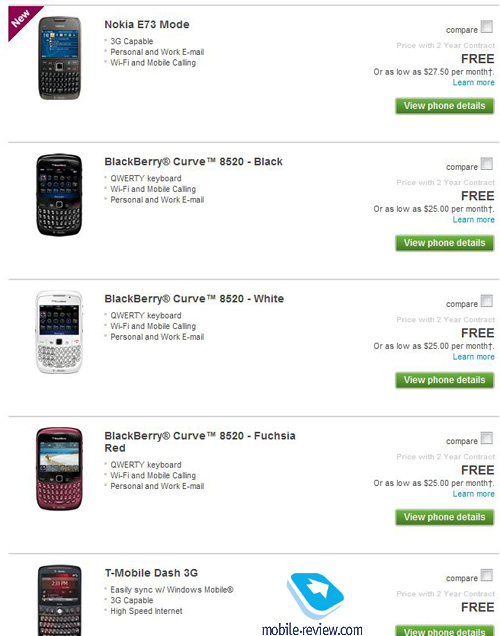
, i.e. the recently released Samsung Gravity T, in some instances it is cheaper to buy a smartphone than a simple messaging phone from Samsung, thus giving the customers who may not have even thought about getting a smartphone an interesting alternative. For these users (read young people) BlackBerry could be a bit too much business oriented and seeing it in business people's hands may have a negative connotation. This is where Nokia may have an opportunity with the E73.
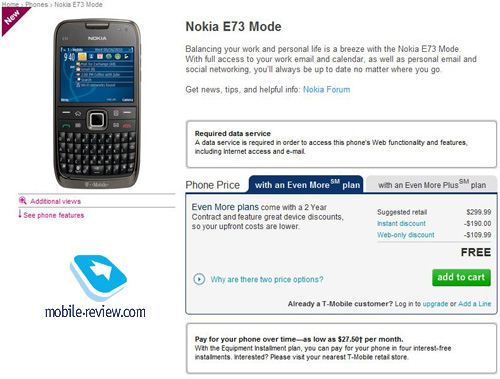
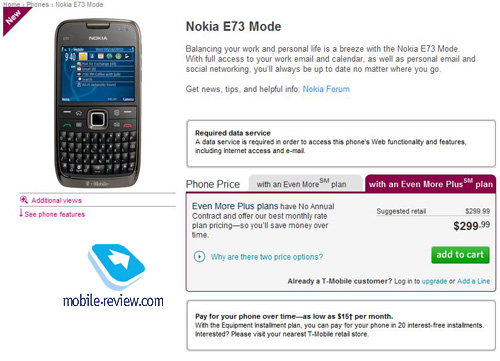

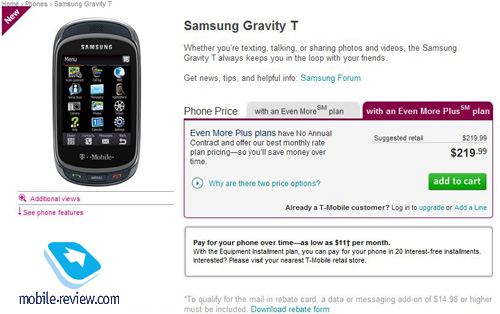
By the summer of 2009 the Nokia E71 had become the best selling QWERTY phone in the world - basically, no other device could even reach it in terms of sales. The main foundation of the E71's success was the fact that it wasn't positioned exclusively as an enterprise solution - to many it also was a fashionable accessory with some business smarts inside. Nokia managed to strike the right balance between these elements, hence the result. All in all, one could easily name the Nokia E71 among the most successful QWERTY phones in history, and there wouldn't be even a little bit of exaggeration. In some markets this phone has technically created the market for QWERTY-enabled handsets, boosting the demand to previously unseen heights.
Design, Size, Controls
It feels as if the motto of the E72/E73 designers was "just make it the same". Indeed, it seems they have done everything possible to keep the E71's shapes and size intact, while making improvements to certain elements. The phone measures 114 x 59.5 x 10.1 mm (against the E71's 114 x 57 x 10 mm) and weights 128 grams, which is exactly 1g heavier than the E71. The E73 seems like it was carved specifically to fit into a shirt pocket, let alone a purse of something along these lines.



First thing you come across is the 3.5mm audio jack on the top end. On top of that the E73 boasts an audio chip, much like most of Nokia's other state-of-the-art offerings, allowing for superior sound quality. Also here is the power button.


Housed on the left-hand side is the memory card slot along with the microUSB socket. The Nokia E73 doesn't have rubber stubs - instead there are a several plastic flaps linked to the casing. On the right there are two volume buttons as well as the Voice key. At the bottom there is the nothing as unlike E72, E73 is charged via microUSB and does not need the 2mm charger slot.





The loudspeaker grill Еhas been moved from the top end to the back side. It'd seem that this relocation would make the E73's ringtones sound worse, but thanks to the fact that the camera module protrudes from the casing a bit, it sounds even a tad better.

The Nokia E73's display is housed under a cover glass, and sitting right on top of it are the forward-facing camera plus the ambient light sensor (manages the backlight level of the screen and keypad).
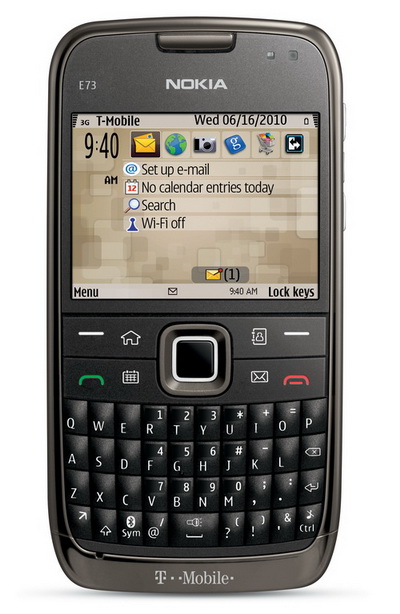
One thing can be said about Nokia E73 Ц it is built like a rock. Quality materials, the feeling of solidness the handset exerts Ц not only it reminds of the rare now virtues thanks to which in large extend Nokia became the world's largest phone manufacturer, but it really gives competition something to shoot for.
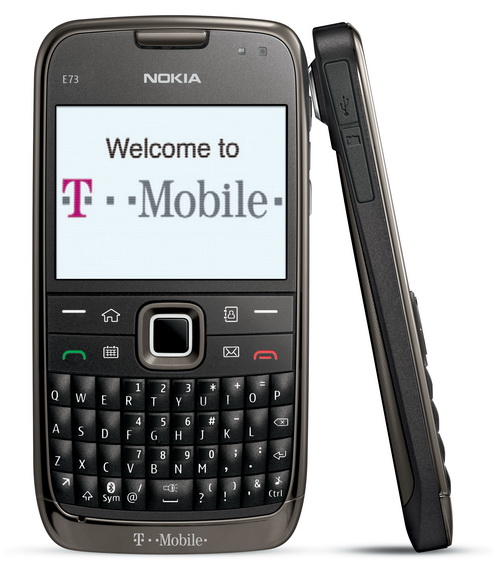
The E73 is be available in one color only Ц Titanium.

Display
The E73 employs exactly the same display as its predecessor, although due the fact that the ambient light sensor works in a slightly different manner, it may seem that Nokia have done something about it. The E73 utilizes a 2.36-inch QVGA display (320x240 pixels, 48x36mm), capable of up to 16 million colors. It manages to output a pretty decent picture quality-wise that remains readable in various environments (it doesn't fade away in the sun at that, all thanks to the mirror underlayer).
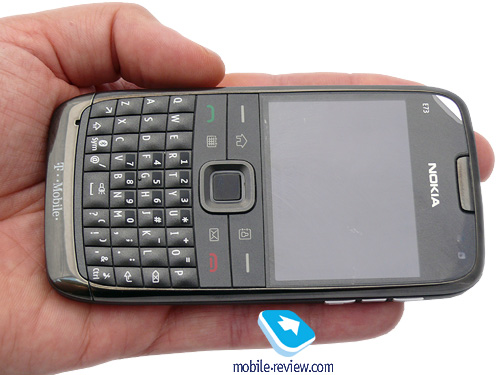
On balance, the E73 packs in a likable display and we are pretty much content with it. It can accommodate up to 8 text and 3 service lines (with some modes allowing for up to 14 text lines).
Keypad
One would think that Nokia would utilize the same kind of keypad in the E72/E73 as in the E71, but instead they opted to run with the Nokia E63's thumbboard, as some users consider it the most comfortable of the two. Although my opinion is that it's more about personal preferences and experience - I can't find anything to complain about with either of them.
Now let's take a closer look at what has been changed. First and foremost, the bottom row has been expanded with two new buttons, meaning that the E73 is very close to the E63 in terms of thumbboard layout. At the same time, the E73's casing width and button shape are identical to those of the E71 - they are a tad bigger (and higher), which should make for better experience.
All buttons are lit in white. Now for the functional buttons. The E73's trademark feature is a 4-button setup (including the Menu button) that allows for one-click access to the calendar, phonebook and mail applications. On top of that there are actually two ways to press each of these keys - long-press and a short click. This way, with a short press you will jump into the phonebook's general list of entries, the mailbox or monthly view of calendar. However when you tap and hold these keys, you will be able to create a new contact, entry in calendar or email. Punching these keys one more time will get you back to the main menu.
Furthermore, you can even reprogram these buttons to access custom applications or features.
The E73's navigation button is pretty comfortable to use; also it has a service LED built inside. The good thing about it is that it is fully customizable - you can setup event notifications and other options. Unfortunately there is no way to disable it during night time (since it glows a little too bright in the dark).
One of the novelties found in the E73 is the optical joystick built into the OK button - many Samsung-branded phones used a similar solution, although it wasn't particularly handy because of how many misclicks it allowed. Unfortunately, the E73 isn't much better. But, it is possible to get used to it, plus this joystick is what one can only wish for when it comes to web surfing. In my opinion, one of the E73's drawbacks is that it doesn't allow the user to disable this joystick everywhere but in browser and certain applications, as it's definitely useless for menu browsing.

Battery
The handset utilizes a 1500 mAh Li-Pol battery (BP-4L), same as in the Nokia E71 and E72. The E73 is rated for 12.5 hours of talk time (GSM) and 20 days of standby. Music time - up to 37.5 hours.
If you forgo EDGE/GPRS data completely, the E73 will offer you even longer hours. Basically, with average use you will get a minimum of 4 days of use out of it. What else can we say - the E73 is unmatched on this front.
Below is our chart of battery times we managed to squeeze out of the E73:
- GPS-navigation - 6.5 hours
- Video playback - 7 hours 50 minutes
- WEB-surfing (EDGE) - 5 hours
- Music (in earphones) - 32 hours
- Wi-Fi (non-stop data upload) - 8 hours for non-stop data transfer, 110 hours of standby (according to Nokia)
The E73 supports T-Mobile USA 3G frequency and stays within 3G coverage most of the time. While the 3G shortened the battery life considerably, the phone easily stayed on for over 2 days from a single charge. In a world where half a day battery life is quickly becoming a norm for more advanced Android handsets and iPhones, the battery life is one of the major advantages Nokia and Symbian have. If you are a heavy user, who can't stand phone going dead by 4 P.M. and does not need all the fancy bells and whistles competition has to offer (many of which are actually exactly the reason why the batteries don't last long enough), this is clearly a phone you need to take a serious look at.
Memory
The device comes equipped with 128 MB of RAM, after first launch you will get around 70 MB of free memory at your disposal, which is enough for running a dozen applications and browsing "heavy" web-pages - the word "slow-down" is definitely not in the E73's vocabulary.
The user almost has 250 MB of storage available, where any data can be stored.It may be not much, but you can also store applications on the memory card.
The E73 deals with microSD memory cards (hot-swappable), the phone comes packaged with a 4GB unit. There are no restrictions as far as memory card's size is concerned - our handset easily identified a 32GB card.

Performance
The phone is fast, there are virtually no lags in its performance. Nokia E73 has a faster CPU (ARM11) running at 600 Mhz against the E71's 369 Mhz. In fact, you don't even need to know this, as the effects of this upgrade can be seen everywhere in the phone.
USB, Bluetooth
USB. Using the USB settings you can choose one of the following modes:
- Data Transfer (Mass Storage USB) Ц memory cards is available, no drivers required, as your OS identifies the handset automatically.
- PC Suite Ц used for device management via Nokia PC Suite, enables all features of the phone, data backup etc.
- Image Print Ц no explanation required.
The E73's data transfer speeds top out at 2 Mb/s.
Bluetooth. The phone comes with Bluetooth v2.0, with EDR support. The following profiles are supported:
- A2DP
- AVCRP
- BIP-ImagePush
- DUN-GW
- FT-Server
- HandsFree-AG (1.0)
- Headset-AG
- OBEX
- OPP-Client
- OPP-Server
- SIM Access-Server
The top speed you can get with the E73's Bluetooth connection is around 100 Kb/s. We also tested its A2DP profile in pair with the Sony Ericsson DS970 headset, which worked just fine Ц we managed our play list, skipped within tracks and adjusted volume seamlessly, however we couldn't make current track's title show up on the headset's display.
Wi-Fi. This handset comes armed with Wi-Fi (IEEE 802.11 g) support. All security standards are supported, including WEP , WPA , WPA 2, with other advanced settings available. Unlike the N-Series, the E73 doesn't support Universal PnP (UPnP). Although, it boasts the Wi-Fi Wizard, which can search and tap into available networks in the background mode.
The E73 also allows you to switch from cellular to Wi-Fi connection at home with T-Mobile HotSpot service and place calls over the Wi-Fi.
E73 doesn't have an IrDA port.
Camera
The E73 comes bundled with a 5 MP CMOS module with autofocus - all in all, it's identical to other latest and greatest phones from Nokia, such as the 6720 Classic. Focusing in done with the help of the optical joystick.
The camera settings are as follows:
- 5x digital zoom
- F = 4.7 mm
- Focus range - 10 cm to infinity
- Macro - 10 cm to 50 cm
- Scenes - automatic, user defined, close-up, portrait, landscape, sport, night
- Geotags (may be disabled)
The E73's top resolution is Print 5M-Large, which stands for 2592x1944 pixels and image size of 2Mb. There are other resolutions as well:
- Print 3M Ц Medium (2048x1536 pixels)
- Print 2 M- Medium (1600x1200 pixels)
- E-mail 0.8 M Ц Med. (1024x768 pixels)
- MMS 0.3 M Ц Small (640x480 pixels)
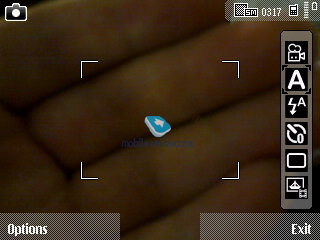


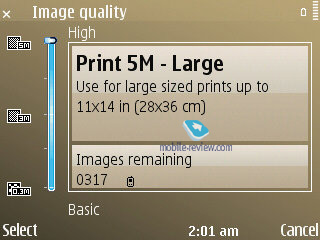
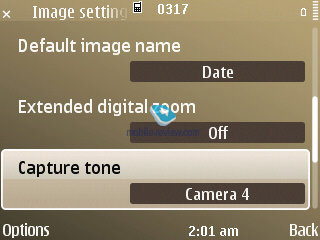
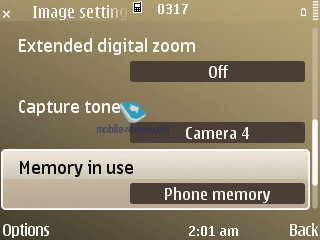
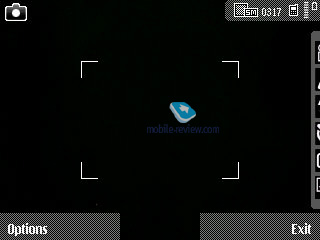

It takes the E73 around 3-4 seconds to save a shot in any of the above resolutions if you have enabled the after-shoot view. Or 1-2 seconds in case you are ready to take another snap right after that (in the latter case all images are saved from the buffer).
Overlays. Since you can apply just the same overlays and effects in any graphics editor, using them while shooting is probably not the best idea. Available overlays are Sepia, Black & White, Negative, Vivid.
Exposure compensation. This feature comes in handy in some specific environments, where it makes for considerably better and sharper shots. It can be modified on a -2 - +2 scale with a 0.33 step.
White balance. The E73's auto white balance does a pretty good job on its own, but if you feel the need to play around with settings, there are Sunny, Cloudy, Incandescent, Fluorescent available as well.
Panorama. After numerous attempts I was not able to make more than two pictures in it, covering about 50% of what I intended.
Video recording. When recording video with E73, there are considerably fewer settings, than in the still image mode. There is a software image stabilizer that was first introduced in the Nokia N80. You can adjust the white balance, choosing from Automatic, Sun, Cloudy, Incandescent, Fluorescent. The overlay pool includes Sepia, Black & White, Negative. There are only two shooting modes - auto or night mode. Maximum resolution - 640x480 pixels (mpeg4), you can also mute sound, although there is no way you can adjust the E73's FPS, which is locked at 15. The handset allows recording videos until you run out of free memory.
Software
Strangely enough, there is very little T-Mobile software installed on the phone. Besides the usual T-Mobile store applications, the only visible and important thing I saw was Visual Voicemail I found very user friendly and convenient.
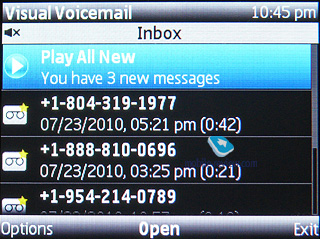
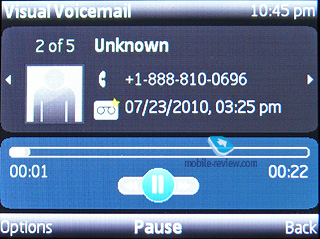
As far as software is concerned, the E73Е comes packaged with Lotus Traveler, which many enterprise users will find quite useful.

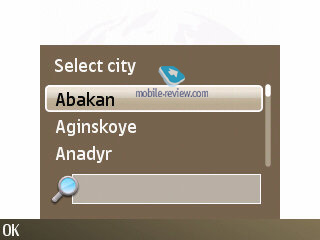
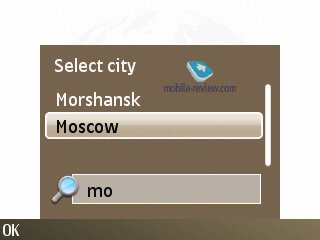
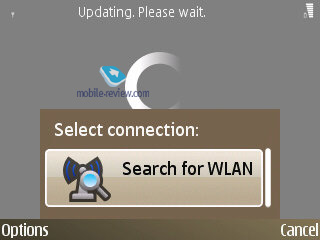

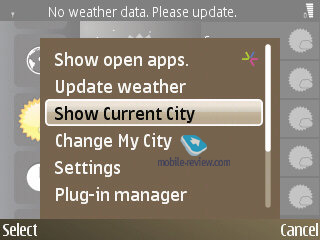
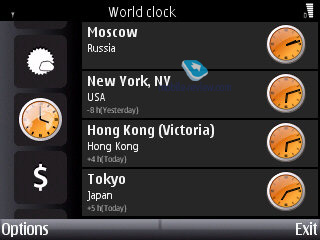
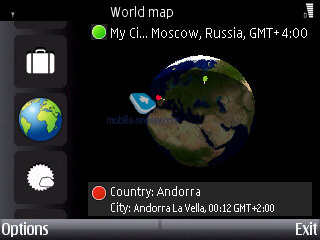
The E-Series devices have always been worlds apart from other S60-powered devices in the way of software. Some apps and options that were tested on these phones in the first place are now becoming par for the course in the rest of the company's portfolio, but some still remain the trademark features of the E-Series. The E73Е packs in a whole lot of small enhancements, which are pretty difficult to spot for those who have never used Nokia's E-Series before.

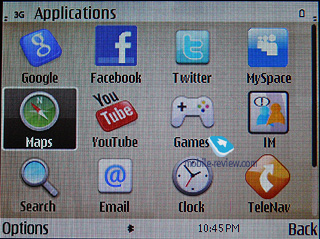
Let's run through all major changes in the standard functionality - if you want to learn more about the core functionality of the E-Series, read our dedicated article on the FP2 linked below.
Mail client
The phone utilizes Nokia Mail version 2.07 client, identical to the one found in the E75, although the major difference highlighted by Nokia is html support in letters. But in reality there are other details that are worth talking about.
The mail wizard will take your though all necessary steps required to setup a new account. In case you use a well-known service, such as Gmail or Yahoo, all you'll need to do is enter your mail address and password - and that's it, you're all set.
While you can have as many mailboxes of various types as you want, only two of them will show on the desktop, the rest you will need to check manually to see if anything new is there. In my case, the Gmail and Mobile-Review boxes were showing, which worked for me, but if you want a particular box to be seen on the desktop make sure you create it first.
When connected to your mail box, the E73 shows a matching splash screen as well as a special icon in the top right. Unfortunately, there are no other indicators in this client (such as the number of letters or delivery process), nor does it allow the user to upload only selected entries. But while it may seem ascetic, this mail client is still superior to that found in other Nokia-branded phones.
The default feature pack is nothing to write home about. One thing of note, though, is that all links now have the Play icon next to them, allowing the user to open them in a new window or use Intranet.
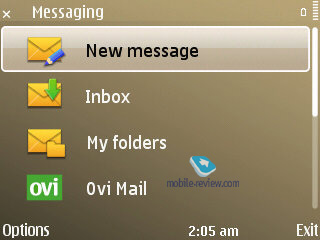
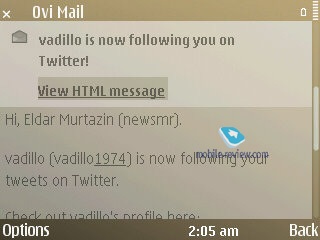
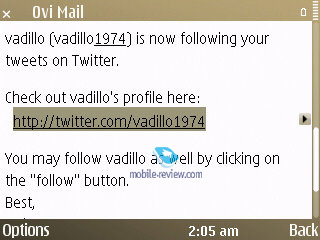
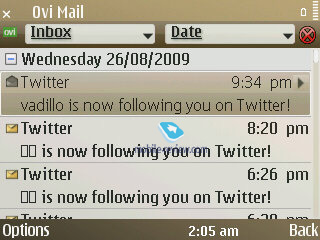
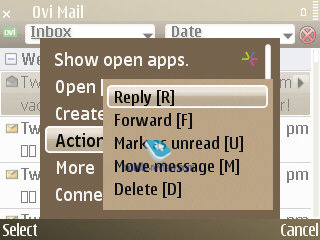
But the most interesting thing about it is how this client handles html. These letters get opened in a new window, using the browser's engine and that's the point where all the trouble with character encodings (other than Unicode) being. For example the standby screen shows latest letters and first lines picked out of them. Letters in Russian, as a rule, are displayed correctly, but there is a chance that it'll get twisted in the html view and vice versa. Unfortunately Nokia haven't done their homework and haven't solved their old localization problems. Many applications and features suffer from poor translation and character encoding issues. For example this mail client doesn't allow to pick character encoding, which is a huge drawback for many regions utilizing non-Latin alphabets.
Online mail services work in an even more twisted way on the E73 - for example, if you open a letter in html via Gmail, you won't notice anything out of the ordinary, same goes for previewing it in the mail client; but as soon as you open this letter in the browser as html, the character encoding will crumple.
The QWERTY-orientation of the E73's mail client also manifests in the form of shortcuts on the keyboard. But while they are very handy, other apps found in the E73 lack this feature, which is a pity. For example, one would expect to find them in the organizer, but there are none.

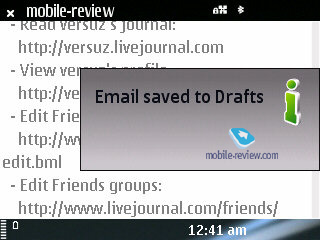


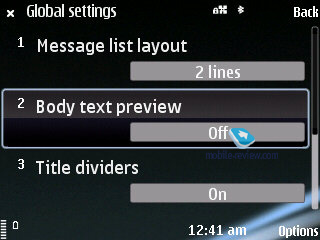
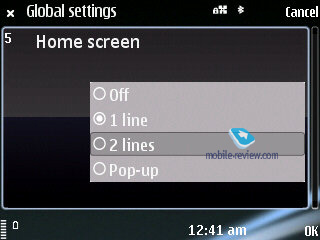


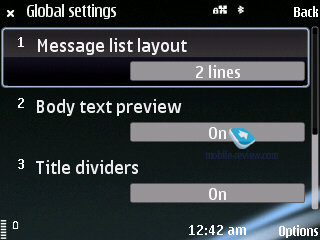

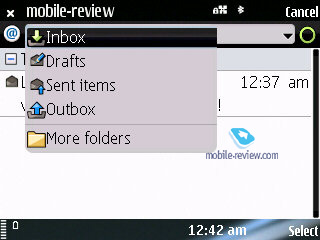
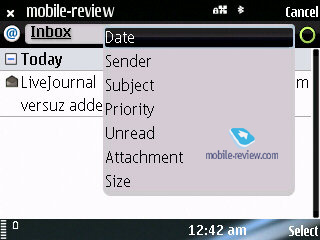

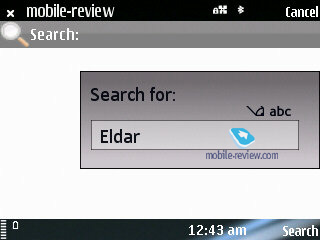

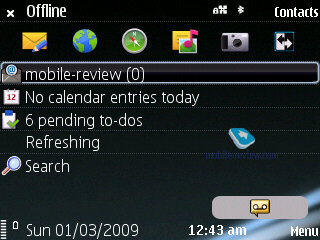
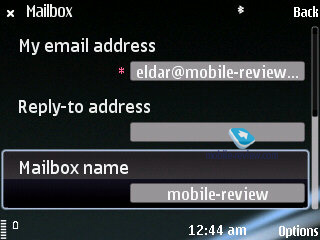

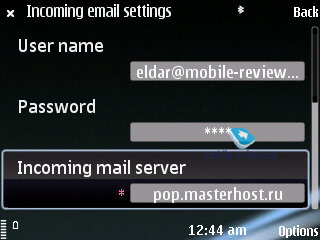
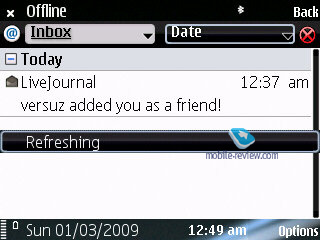
The mail client supports POP3/IMAP, remote synchronization and other par-for-the-course features. But unfortunately, the above-mentioned drawbacks will probably make you not want to employ it as you main mail client, especially if you're a sophisticated user. Had it not been for all the hype Nokia created around this client, I wouldn't have anything against it, but in all honestly, they should have come up with something more interesting for enterprise users.
Apart from that the E73 boasts Push-esque functionality when the service automatically checks for new mail and sends it to your phone - while one could argue that the way it's implemented in the E73 is far from ideal, the ordinary consumer will be more than happy with this feat.
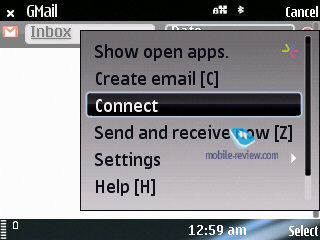
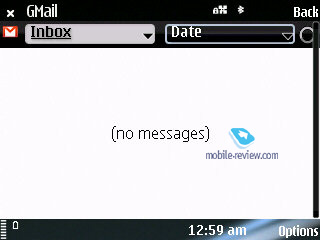

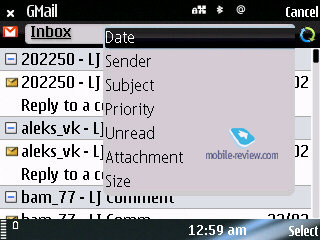

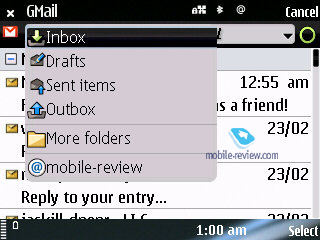
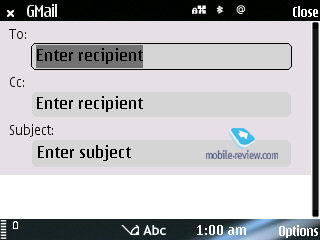
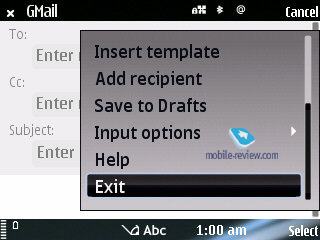
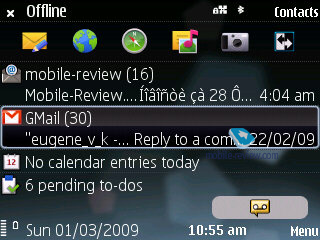
Instant Messaging. The following IM are pre-installed in E73: AIM, MSN, Yahoo!, MySpaceIM, Google Talk.
Social Networking. All the major networks (Facebook, Twitter, MySpace) are supported.
Desktop. The desktop mode has been revamped a little - now at the bottom there are three icons standing for missed calls, messages and voice mail. If there are no events at hand, the corresponding icon will vanish. Clicking on each thumbnail will make a pop-up with extra information appear on the screen. Compared to the E71, the setup found in the E73 is somewhat different: for example, it doesn't show any info from SMS other than sender's name or number.
There is also an option to tack up to 14 apps on to the desktop, which is extremely handy - add two Mode screens and the number of applications you can have at your fingertips gets even bigger.
Profiles. As with other Nokia smartphones, you can pull the list of available profiles by pressing the power button for a short time. In addition to standard preinstalled fair you can edit, you can design your own profiles, but they will not be automatically time activated. For that you will need to invest into third party software, i.e. handy Shell or Spb Software Shell.
Mode. In a nutshell, it's a mobile version ofЕ virtual desktops. That is, you make up a couple of screens, where various themes, pictures, applications, plug-ins and other essentials are housed/used. And then you can swap between them in one touch, so that it's always easy to jump between your setup for work with mail and notifications brought up on the main screen and the home setup with a different theme applied (without your company's logo or colors) and player controls lined up on the screen instead of email notifications. It takes the E73 around 6-7 seconds to jump between modes.
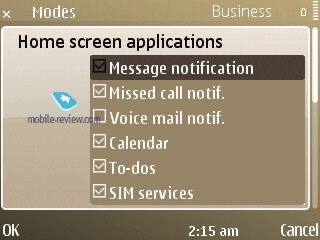
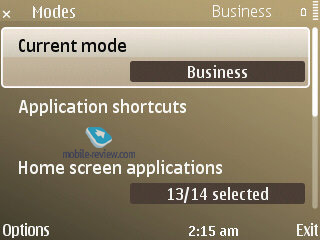
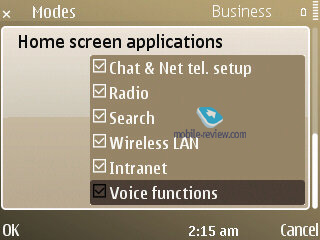
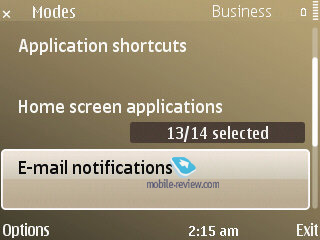
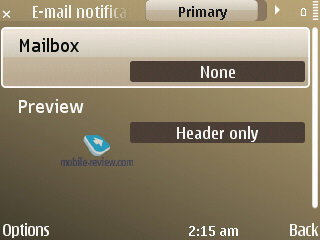
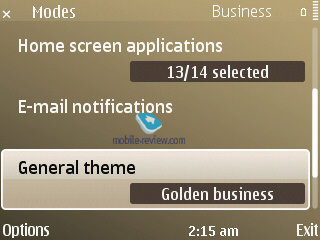


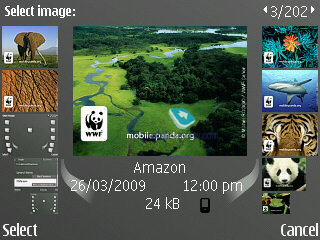
Phonebook. While at the standby screen you can type in any letter from the keyboard and the phone will instantly look-up all contacts in the phonebook that have with this letter in either first or last names. The same method works in the contact list too.
Contact groups have been given a major boost too - now you can submit a number for voice conferences, a password and also a PIN-code. Enterprise users, who use conference calls a lot, will surely appreciate this new ability. Plus you can select a ring tone for any contact group in the E73 (but not a picture, regrettably).
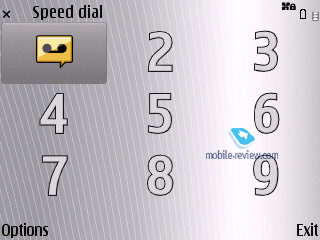
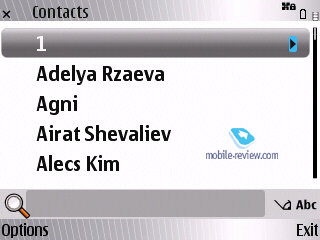

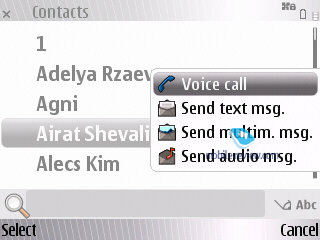
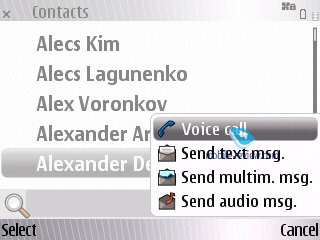
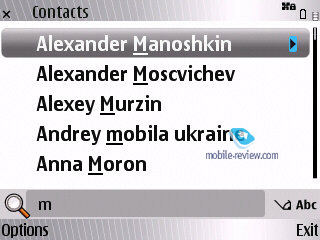
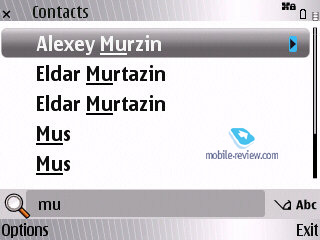
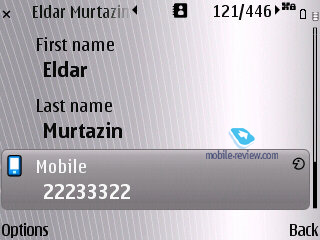
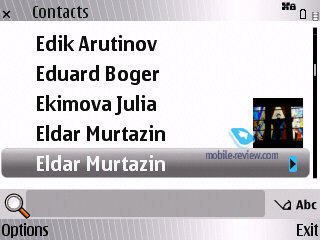
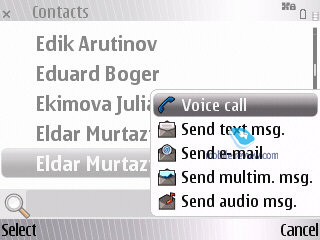
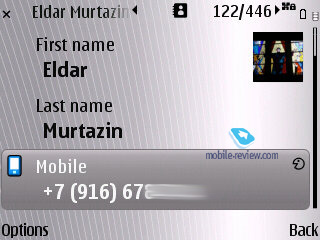
With groups you can also make use of "Call to many" feature, which will allow the E73 to set up a conference call on its own; on top of that the handset allows for bulk mailing.
Regrettably, there are no other views available for the phonebook - for instance, you can't make the E73 show contacts coupled with at least one phone number. At the same time it allows calling up a drop-out menu by selecting a contact and pressing the navigation button right - it'll let you make a call or send a message without leaving the phonebook menu. On top of that this list is context-sensitive, meaning that its options will change depending on what types of phone numbers are available for the contact in question.
The roster of fields you get to fill when creating or editing a contact hasn't changed much, but the E73 manages to offer a better address field setup and also BlackBerry PIN as a default option.
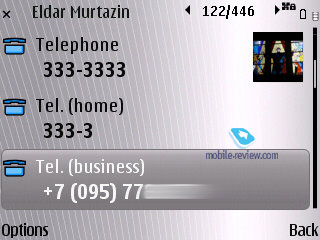
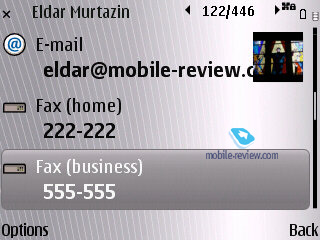
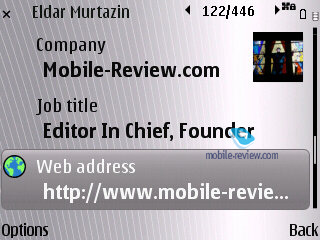
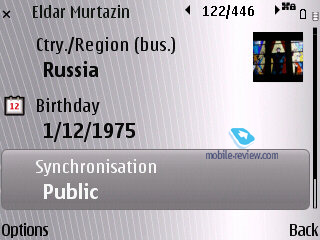
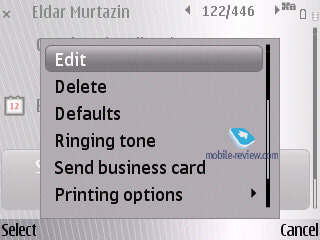


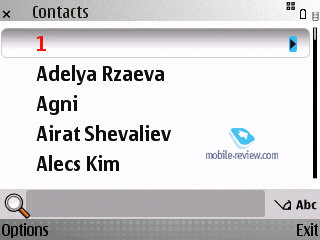

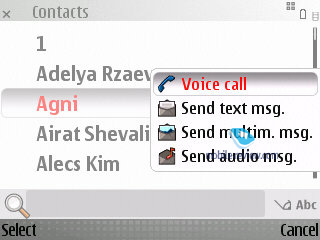
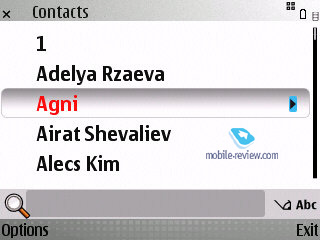
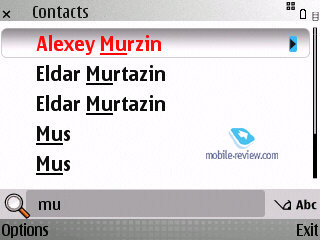
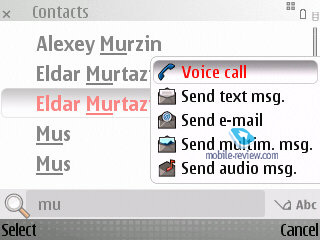



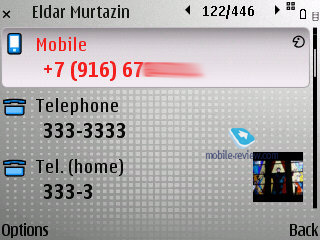
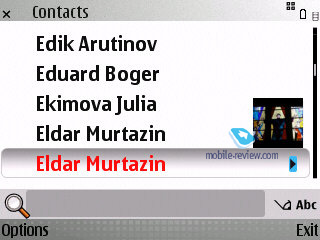


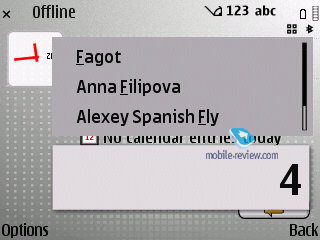
One thing works badly on all S60 phones and unfortunately E73 is no exception: when I take my personal Nokia 5530 phone and send all the contacts from my phonebook (currently 174) as business cards via Bluetooth to the cheapest Samsung phone, they all end up in the Samsung's phonebook, sorted and ready to go. Yes, sometimes the pictures assigned to the contacts do not transfer, sometimes the email addresses come out crooked, but it works. When I send contacts from a Nokia smartphone to a Nokia smartphone the same way, all these contacts end up as the messages in the Inbox. I then have to open and save every single contact separately with all the questions and confirmations that S60 is notorious for. You know what is more fun than to go through 174 contacts, saving them one by one? Going through 175 contacts saving them one by one.
Calendar. The Calendar application hasn't changed a bit since its last iteration; in fact the only thing that's different is its layout, when the E73 shows both the calendar and events scheduled for the current day. In case there are too many entries, the E73 will show only their total number with no extra information. When using the weekly view of calendar, all events are displayed just like in MS Outlook, plus there are some pop-up tips scattered across the screen. All in all, while pleasant, none of these changes are groundbreaking.
Text input. The E73 allows choosing two input languages: main and secondary (this feature was available in Motorola's phones before). This feature allows you to switch between languages while typing, which is very handy. The T9 mode works in a slightly different way as a result - it "guesses" words in two languages simultaneously, which may feel awkward at first, but fairly easy to get used to. The languages onboard include English, French, Spanish and Portuguese Ц all the main languages present in the Western Hemisphere.

Voice functions. Surprisingly, one of the major updates found in the E72, as well as in the Nokia E73 was completely overlooked by the vast majority of journalists. In reality, though, the E73 sports some very unique features in this department - those who spend a lot of time on the phone while driving will definitely appreciate them.

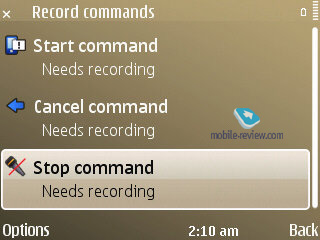
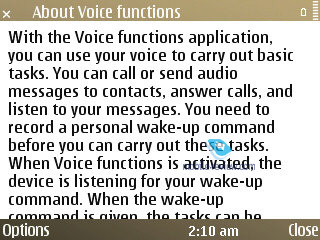
The E73 retains all the standard voice dial functionality: tapping and holding the Call key brings up the voice dial menu, the built-in app handles all names stored in the contact list with ease, plus there is Voice aid. So, what's the big deal about it?
The Applications menu features Voice Functions icon. Tap on it, and the app will offer you to record three commands with your voice: Start, Stop, and Cancel. You can record them in any language, just make sure you repeat each of them three times. Then, minimize Voice Functions and take a closer look at the standby screen that now sports a new icon tagged as "Start Voice Functions". In essence, it's similar to Sony Ericsson's Magic Word - now you need to say the key word to activate Voice Control. In my case, it was "Start Voice Functions" - easy, right?
Say it, and the phone is ready to go - you can ask it to dial a number from the contact list, read out a message or a letter (with the help of Message Reader that all owners of the E71 know very well), plus it allows you to navigate through your message boxes.
If you don't want the E73 to read all messages for you, just get it to find the entry in the phone book you need and then tell it to read mail or SMS. Furthermore, you'll have the option to reply by making a call or MMS (voice message). All that can be done without even touching the phone. Sometimes, when the E73 can't make out who you're talking about, just cancel the last action and start over.
Apparently, this application was designed for in-car use - think about it, it works without a headset, activates the speaker phone automatically (and it can't be disabled), so that it becomes next to impossible to make calls when holding the phone next to your ear. On top of that, it's not advisable to keep this feature on for a very long time, as it's incredibly power-hungry.
To test the E73's voice functions I had it dial my friend's number and then asked to read out all messages from him, picked one and recorded an MMS reply. During the first five minutes I was somewhat confused, the phone kept repeating all commands into the headset and offered various tips, but in the next several minutes I got used to it and did everything I intended without any hiccups.
Nokia have officially become the first phone maker to offer phone-wide integration of voice features you had before and the quality of the resulting product is more than satisfactory. I think that this system will keep evolving, as it's got a lot of potential. By the way, there is also Talking Theme that allows you to navigate through the main menu without touching the phone - the phone will inform you what section you are in, and read out messages/names if necessary.
Font Magnifier. This application from Nokia Beta Labs has finally become a part of the standard feature pack, as many users have come to like it. In a word, it allows you to alter the font size in menus, which is a handy feat to have around.
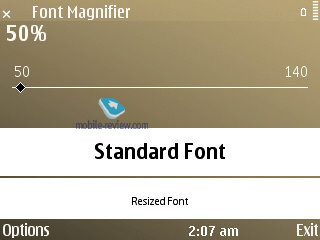
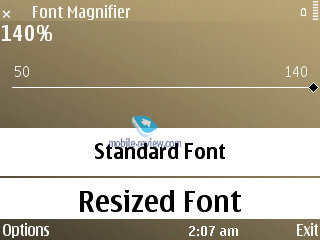
Office applications. Enterprise users will surely appreciate the E73's Intranet application, which comprises the settings of VPN-client.
Microsoft Office documents are still handled by QuickOffice, which is a pity (although many will be content with what it has to offer). The good thing about it is that not only does it allow reading office documents, but also editing them.
Also there is a ZIP archiver... and a PDF Reader. WiPresenter, Converter, Calculator, Notes and Active Notes able to store the voice recordings, images, etc. are present as well as a Multiscanner, allowing to scan a business card (for example) and add it to your address book. In the special Enterprise folder not only the Intranet access, but also Encryption software (see below) and MDM Client are found. Also, the phone provides access to Ovi Files Ц Nokia's online storage facility. I'd have to say this is one of the most comprehensive set of business tools found out of the box on the US market.
As this is a carrier phone, the original Skype could not be installed on it. During the time we spent with the phone, Fring lost Skype and the only alternative left was Nimbuzz. It installed and worked like a charm.
(Considering all these developments, we have to note that Skype plays kiss-the-carrier's-ass game way too hard. It became a giant it is without any carrier help or support, rather against carrier's resistance thanks to people who appreciated its convenience and who want to see it on their mobile devices with 3G and 4G networks abound. By blocking software installation on compatible carrier devices Skype does not do itself any favors.)

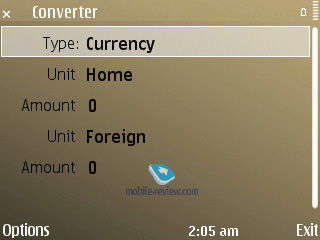
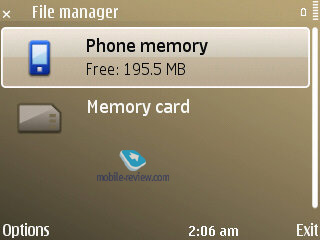
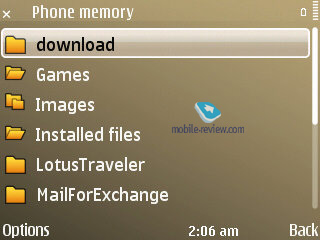
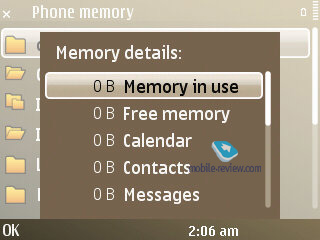

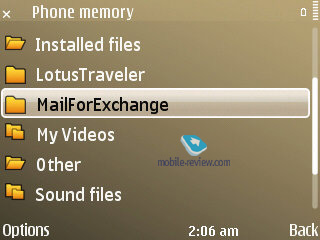
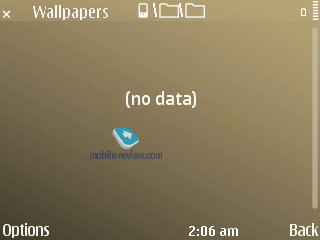
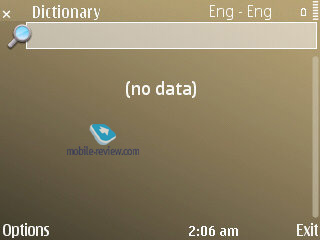
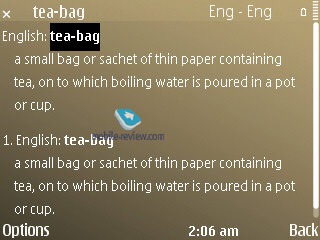

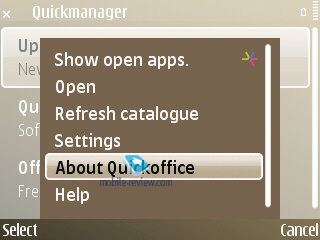
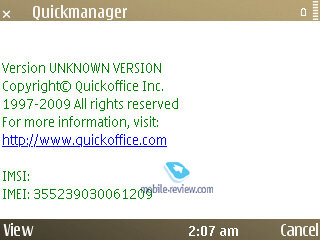

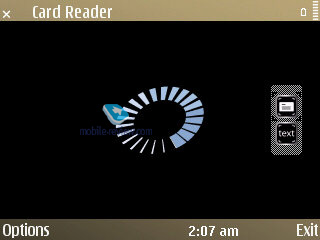
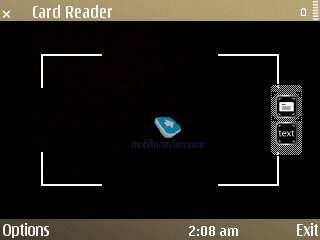
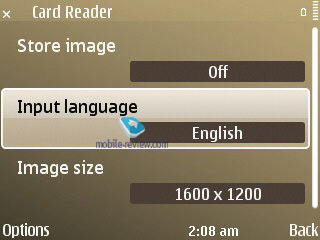

Data encryption. Another change of note - the E73's ability to encrypt data both on the memory card (microSD of any size) and the handset's internal memory. And this saves you a whole lot of trouble should you smartphone end up in some villain's hands, who does know how to break a standard password. On the other hand, if you forget the password yourself, you won't be able to recover the data, which will be a pity, but all systems of this kind have this glitch.
Music. Since the E73 is almost an exact copy of the Nokia 5730 XpressMusic, it packs in a dedicated audio chip, meaning that it surpasses all previous E-Series-branded phones on this front, plus the E73's standard 3.5 mm audio jack allows the user to utilize a pair of custom earphones. As with other Nokia phones, there are problems with non-Latin names, the shuffle does not work well shuffling only 50 or so songs out of 2,000 on the SD card, the phone forgets where in your playlist you were once it is turned off.
The phone has built-in FM radio. Wired headset serving as an antenna has to be used.
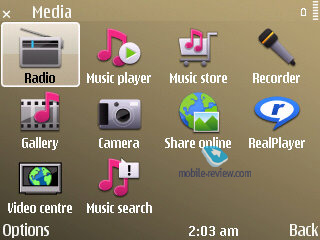
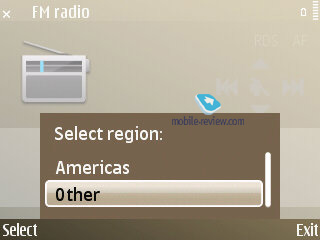
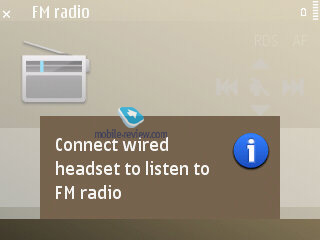
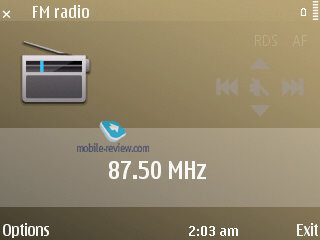
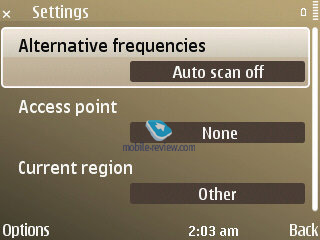
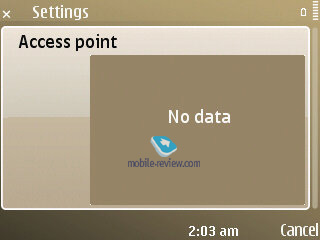
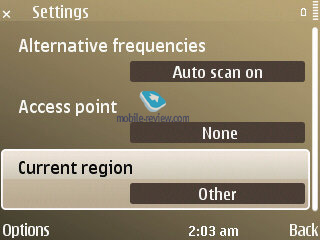
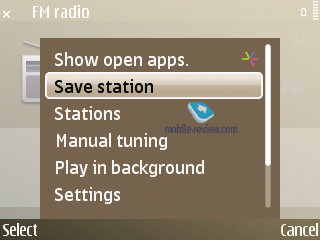
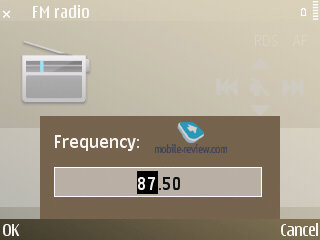
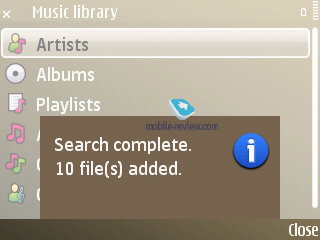

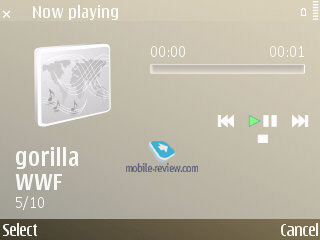
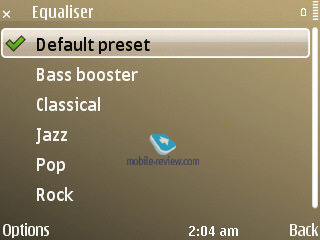
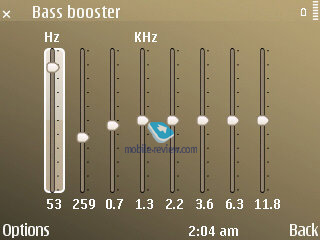

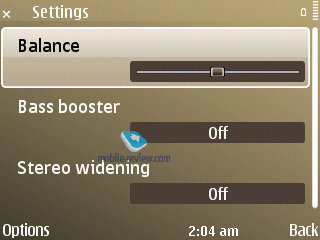
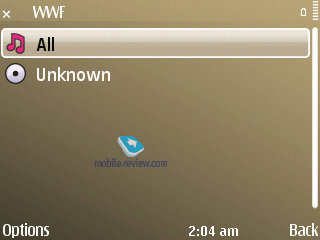
Browser. Nokia is notoriously famous for its inability to fix its S60 browser for years, but thankfully it is not a big problem. If you like yourself even a little bit, you will download a free Opera browser and never use the OEM one again.
Maps. The E73 makes use of free Ovi Maps with voice navigation and comes bundled with a car charger, presumably for use as a navigation tool in a car. Neither Nokia, nor T-Mobile however wanted to spend money and put a phone holder into the box, although it does show on the marketing pictures. For some reason, besides the free NAVTEQ Ovi Maps navigation, T-Mobile offers paid TeleAtlas's TeleNav GPS Navigator on the phone. Can't see many takers for it.

Games. The phone comes with a few pre-installed game demos you can upgrade to a full version for extra $: Who Wants To Be A Millionaire, Guitar Hero, Pac-Man, The Sims 3, Collapse Chaos and Block Breaker 2 Deluxe.
Impressions
As far as call quality goes, this is one a standard Nokia phone. The ringer is loud and clear, vibration strong enough to be noticed.
The quality of materials used is great, the battery cover sits tight and metal surface feels expensive.
The E73 is a fast phone that did not give me much of the problems during my limited time with it, however as a user of Nokia N82 and Nokia 5530 I am remembering the inherited problems S60 OS has, the bugs that start showing up after a while that may lead to eventual self-destruction of the phone as it happened with my N82, who went crazy taking all the contacts and messages into the abyss along the way. Of course, there are also thousands and thousands of happy Nokia smartphone users out there, who did not experience many problems, so your mileage may vary.
The phone also employs Noise Cancelation system, which is implemented in the form of two microphones - each analyzes environment sounds and blocks outside noise.
On balance, the Nokia E73 is a very appealing phone and a very worthwhile alternative to BlackBerry. The keyboard is very comfortable, the screen Ц great, full suite of business tools onboard Ц hard to compete with. Add to this awesome battery life, free voice navigation, a very good music player sound wise, a decent camera and a rock solid build Ц and we can conclude that Nokia made a worthy selection for its US market carrier lineup.
Do you want to talk about this? Please, go to our Forum and let your opinion be known to the author and everybody else.
Back to the table of contents >>>
Michael Savuskan (msav(at)mobile-review.com)
 Facebook Facebook
 Livejournal Livejournal
Eldar Murtazin (eldar@mobile-review.com)
 Twitter Twitter
 Livejournal Livejournal
Partially translated by Oleg Kononosov (oleg.kononosov@mobile-review.com)
Published — 22 August 2010
Have something to add?! Write us... eldar@mobile-review.com
|
























































































































































































